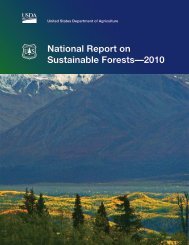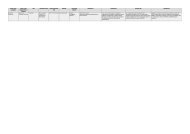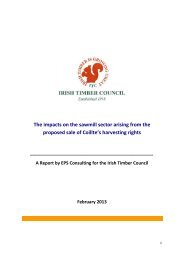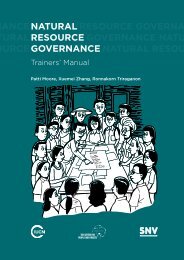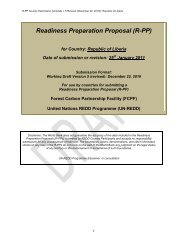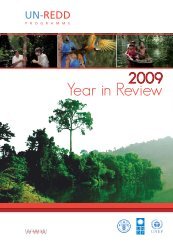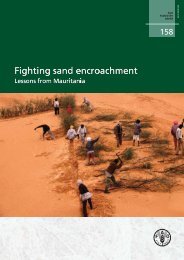pdf 1242 KByte - JIKO
pdf 1242 KByte - JIKO
pdf 1242 KByte - JIKO
You also want an ePaper? Increase the reach of your titles
YUMPU automatically turns print PDFs into web optimized ePapers that Google loves.
Policy Paper: Assessing prerequisites for market-based REDD+ activities 11<br />
Unilateral and Bilateral Initiatives<br />
Brazil, the country with the world’s largest remaining area of tropical forest is neither a member of the UN-<br />
REDD programme nor of the Forest Carbon Partnership Facility (FCPF). In 2008, the government of Brazil<br />
started a national-level REDD programme based on the Amazon Fund. Since its inception in 2008, this fund<br />
administered by the Brazilian Development Bank BNDES received more than 100 billion US$ with the major<br />
part of the contributions coming from the government of Norway. While the REDD programme is not<br />
linked to carbon markets and offset credits are not issued to the funding providers, the programme’s experiences<br />
are of great importance due to its performance-based approach. To estimate the performance, a national<br />
reference level based on a rolling average historical deforestation rate is used. The average is calculated<br />
using deforestation rates over a ten year period and is updated every five years (The REDD Desk 2011a).<br />
The National Institute for Space Research (INPE) through its Brazilian Amazon Forest Monitoring Programme<br />
(PRODES) has been producing annual data on deforestation since 1989. The images produced by<br />
PRODES are publicly available and are widely used by NGOs and private institutions. Different research<br />
groups have developed techniques to detect and estimate deforestation and forest degradation by fire, logging<br />
and other activities (The REDD Desk 2011a). Brazil has further planned a stratified ground sampling network<br />
with permanent sample plots, which will be used for ground-truthing of satellite data. Together with<br />
PRODES this network makes Brazil the developing country with the most advanced monitoring system in<br />
the world (Morris / Riddle 2011).<br />
China has its own remote sensing system and a ground inventory system based on fixed ground sample plots<br />
and regular measuring. Both monitoring systems are similar in sophistication to those used in the Annex-I<br />
countries (Morris / Riddle 2011).<br />
In other REDD+ countries, forest monitoring programmes are still being developed. Under the partnership<br />
with Norway Guyana is developing a national MRV system along a capacity building roadmap approach<br />
comprising three phases: a national strategy development (2010), country readiness (2011/2012) and implementation<br />
(post 2012). Phase one consists of gathering information and filling data gaps, while in phase two<br />
capacities for historical forest monitoring and carbon monitoring at IPCC Tier 2 are conducted and a reference<br />
level is set. In the final implementation phase, the roadmap aims at establishing a consistent and continuous<br />
MRV system and the opportunities for moving towards Tier 3 carbon reporting may be assessed<br />
(Herold / Bholanath 2011). The first steps along this roadmap have been completed in March 2011 with a<br />
report that assesses historic levels of land cover and deforestation rates (Guyana Forestry Commission /<br />
Poyry Forest Industry 2011). Technical challenges are, however, high: Donor country Norway had to revise<br />
the baseline by nearly 40% (Global Witness 2011). Currently research is being carried out to assess Guyana’s<br />
degradation levels (The REDD Desk 2011b).<br />
The Forest Carbon Partnership Facility<br />
The Forest Carbon Partnership Facility (FCPF) is a global partnership of donor countries, carbon fund participants<br />
and a large number of tropical and sub-tropical countries administered by the World Bank. The programme<br />
was launched at the 13 th Conference of the Parties in Bali and became operational in 2008 with the<br />
aim to assist tropical and subtropical forest countries to develop and implement the policies and systems for<br />
REDD+. The FCPF comprises two separate mechanisms: The Readiness Mechanism and the Carbon Finance<br />
Mechanism. With the readiness mechanism (Readiness Fund), the FCPF assists countries in developing a<br />
national reference scenario based on historical emissions and (where feasible) an assessment on how these<br />
Nicolas Kreibich, Christof Arens and Wolfgang Sterk<br />
Wuppertal Institute




